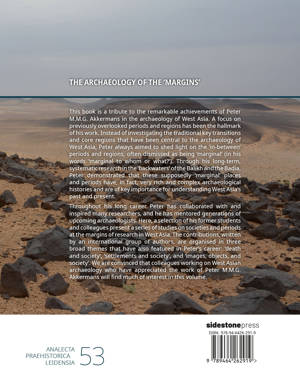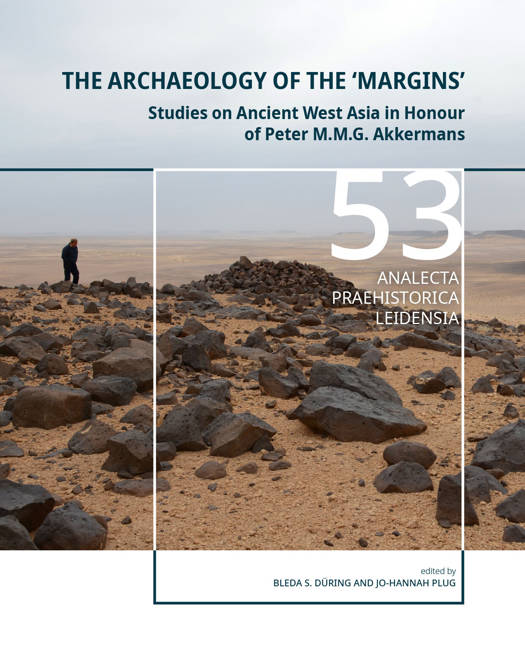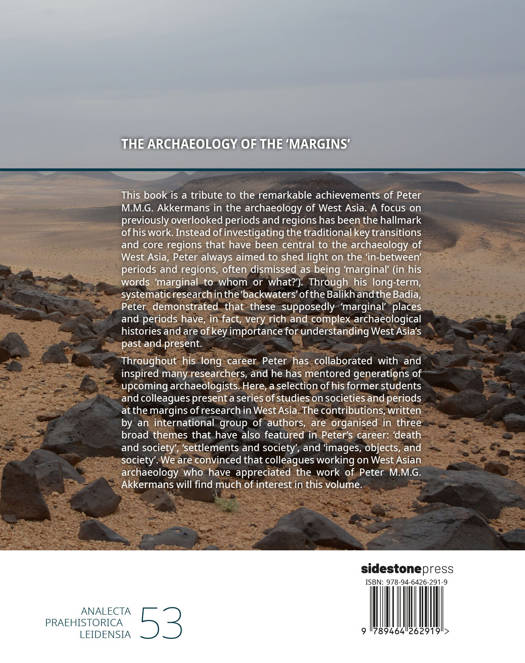
- Afhalen na 1 uur in een winkel met voorraad
- Gratis thuislevering in België vanaf € 30
- Ruim aanbod met 7 miljoen producten
- Afhalen na 1 uur in een winkel met voorraad
- Gratis thuislevering in België vanaf € 30
- Ruim aanbod met 7 miljoen producten
Zoeken


The Archaeology of the 'Margins'
Studies on Ancient West Asia in Honour of Peter M.M.G. Akkermans
D Ring Bleda
€ 120,00
+ 240 punten
Uitvoering
Omschrijving
This book is a tribute to the remarkable achievements of Peter M.M.G. Akkermans in the archaeology of West Asia. A focus on previously overlooked periods and regions has been the hallmark of his work. Instead of investigating the traditional key transitions and core regions that have been central to the archaeology of West Asia, Peter always aimed to shed light on the 'in-between' periods and regions, often dismissed as being 'marginal' (in his words 'marginal to whom or what?'). Through his long-term, systematic research in the 'backwaters' of the Balikh and the Badia, Peter demonstrated that these supposedly 'marginal' places and periods have, in fact, very rich and complex archaeological histories and are of key importance for understanding West Asia's past and present.
Throughout his long career Peter has collaborated with and inspired many researchers, and he has mentored generations of upcoming archaeologists. Here, a selection of his former students and colleagues present a series of studies on societies and periods at the margins of research in West Asia. The contributions, written by an international group of authors, are organised in three broad themes that have also featured in Peter's career: 'death and society', 'settlements and society', and 'images, objects, and society'. We are convinced that colleagues working on West Asian archaeology who have appreciated the work of Peter M.M.G. Akkermans will find much of interest in this volume.
Throughout his long career Peter has collaborated with and inspired many researchers, and he has mentored generations of upcoming archaeologists. Here, a selection of his former students and colleagues present a series of studies on societies and periods at the margins of research in West Asia. The contributions, written by an international group of authors, are organised in three broad themes that have also featured in Peter's career: 'death and society', 'settlements and society', and 'images, objects, and society'. We are convinced that colleagues working on West Asian archaeology who have appreciated the work of Peter M.M.G. Akkermans will find much of interest in this volume.
Specificaties
Betrokkenen
- Auteur(s):
- Uitgeverij:
Inhoud
- Aantal bladzijden:
- 310
- Taal:
- Engels
- Reeks:
Eigenschappen
- Productcode (EAN):
- 9789464262926
- Verschijningsdatum:
- 26/11/2024
- Uitvoering:
- Hardcover
- Formaat:
- Genaaid
- Afmetingen:
- 210 mm x 265 mm

Alleen bij Standaard Boekhandel
+ 240 punten op je klantenkaart van Standaard Boekhandel
Beoordelingen
We publiceren alleen reviews die voldoen aan de voorwaarden voor reviews. Bekijk onze voorwaarden voor reviews.












